“Look, it’s a phallus!” exclaimed one of the two visitors at the art show, then asked that the object be removed from the Salon, since it could cause incidents that would put the public’s chastity in peril. In the following days, the press begins a huge investigation amongst the public intellectuals fighting for “the freedom of art”. Around 70 high caliber names of international fame answer in protest of removing the artwork from the exhibition.
If you think this incident took place in 2015 at the Romanian Cultural institute in New York during The Other Side of the Romanian Avant-garde: Film, Photography, Performance (April 3rd – 30th) and that the two visitors are Grid Modorcea and Mircea Diaconu, two bashful men under the constant surveillance of Mihai Gâdea, who slowly bats his eyelashes from behind his spectacles as he talks about the history of art during the May 7th 2015 edition of The Daily Summary on the channel Antena 3 and a few online publications, then you are wrong. They spoke without actually visiting the exhibition. We are in Paris in the year 1920 at the Independent Salon, where the two men that shout „Voilá le phallus!” at the sight of Princess X by Constantin Brâncuși are none other than Henri Matisse and Pablo Picasso. Matisse, the commissary of the show excommunicates Brâncuși’s work from the Salon. The February 25th 1920 edition of the newspaper Le journal du peuple contains signatures of protest by Braque, Fernand Léger, Juán Gris, Albert Gleizes, Archipenko, Picabia, Ribemont-Dessaignes, Erik Satie, Georges Auric, Jean Cocteau, V. G. Paleolog, Miliţa Petraşcu and others against Matisse’s move; that same Matisse who would go on to be inspired by Romanian folkloric motifs in his work – those same motifs that TV hosts wear as proud Romanians.
Ten years after the Independent Salon incident in Paris 1920, four high school students in Bucharest publish a magazine called Pulă (Dick), also known as A magazine of modern dick. Universal organ, clandestinely printed in 13 copies, one of which is sent to the Minister of Public Instruction of that time, the historical Nicolae Iorga. The highschoolers are denounced, arrested and sent to Văcărești prison. Jules Perahim, Gherasim Luca, Aurel Baranga și Paul Păun, as the four were known, team up with the poet Geo Bogza, who was in the next door cell, convicted for violation of good morals after publishing his Sex journal a year before. Their case wasn’t special. Others before them were convicted because of their art, more notably the young B.P. Hașdeu who published the erotic short story Duduca Mamuca in the magazine Aghiuță. Our now famous students are at it again with the magazine Muci (Snot) but find the public to be more permissible. Geo Bogza, however, is convicted a second time for a new volume of poetry entitled The invective poem. With the author’s finger prints. The first person who would ever dare to make a commentary on Bogza’s two controversial works is N. Steinhardt who manages to admirably quote more than half of the poems in a book called Geo Bogza, a poet of Affects, Exaltations, the Grandiose, Solemnity, Exuberance and Pathos, all this in the heart of the communist era, in the early 80’s. Pula will have to wait another 10 years to resurface, thanks to Nicolae Tzone and Vladimir Pană who publish it word by word in issues 2-4 / 1996 of Aldebaran magazine in Bucharest. Geo Bogza’s poetry volumes, however, before being integrally reissued in 2010 in the Books for all collection by Jurnalul Național no. 89, are featured in I am the target. Geo Bogza speaking with Diana Turconi, published in 1996 by publishing house Du Style which was coordinated by the writer Doina Uricariu herself.
When N. Steinhardt was facing censorship by riskily quoting verses from prohibited poetry volumes, Aurel Baranga had just died, Paul Păun was in Haifa and Jules Parahim and Gherasim Luca were in Paris. Perahim was already a well-known post-war surrealist visual artist while Gherasim Luca, who was admired by Gilles Deleuze and Felix Guattari, was dubbed, as the poet Michel Camus puts it, “France’s great wizard of resonant poetry”. Their “magazine of modern dick” however, will have to stay tucked away until the 2000s when, using the secret funds that any respectable archive holds, it is exhibited in a humongous surrealist art show at the Metropolitan Museum in, alas, New York, and later on it makes an appearance at Perahim’s 100 year old mega-retrospective in Strasbourg. I should also add that in 2012, during the Binoche et Giquelle auction, lot 440, on April 6th, one copy of the magazine was sold for 15 000 Euros.
But it’s not due to the cultural prestige of this yet to be written Romanian history of litigious art that I chose to include the nude portraits of surrealists Jules Perahim and Gherasim Luca in ICR NY exhibition that I personally curated. I did it because of the theme requirements of this particular exhibition. For almost a whole month, the works that hung on the walls of the conference room hallway (because ICR NY doesn’t host an art gallery anymore, it was turned into the waiting room for the consulate; so from now on, before asking for international Romanian art, the media should first ask if there is room to exhibit said art) is only a small part of an over 5 year research conducted by yours truly at the University of Fine Arts in Bucharest, with coordination and support by the Art History and Theory professors and with a lot of art archaeology and digging in most of the Romanian national archives.
My curatorial vision for the ICR NY show, organized with the help of Director Doina Uricariu and coordinator Eduard Andre, was meant to highlight a less known side of the historical Romanian avant-garde. On one hand we have the experimental dimensions of Romanian avant-garde and on the other we have its political discourse that became the inaugural pilot project for a longer series of events in honor of the Dada Centenary that ICR NY will organize in 2016. The other face of Romanian Avant-garde: Film, Photography, Performance was composed of textual and photographic documents, followed by a cinema screening of never before seen videos from the Romanian National Film Archive and The National Center of Dance Fund in Bucharest. Those exhibited at New York were: Aurel Baugh, Geo Bogza, Theodore Brauner, Filip Brunea-Fox, Titina Căpitănescu, Irina Codreanu, Lizica Codreanu, Filip Corsa, Jean David, Barbu Florian, Benjamin Fondane, Marcel Iancu, Gherasim Luca, M.H. Maxy, Gellu Naum, Sașa Pană, Jules Perahim, Milița Petrașcu, Claude Sernet, Tristan Tzara and Urmuz, with a selection of avant-garde magazine remakes and movies that MoMA (The Museum of Modern Art, in case Antena 3 doesn’t know what that stands for) hasn’t released yet. During my visit I had the chance to see the interwar photography exhibition at MoMA, where two Romanian photographers were also present: Aurel Baugh și Constantin Brâncuși. Some still life and a cup with a weird looking shadow from the 30s is all that Aurel Baugh had to show for. At ICR however, one could see no less than 14 choreography portraits done by Baugh in 1935 in Bucharest. There is a monumental, iconic photograph of choreographer Trixy Checais from Galați who was deported to Canal in 1950, as well as newspaper containing the story about the opening photography show in Valea Jiului in 1946, where Aurel Baugh, along with Sașa Pană, Ion Călugăru and others were present. Titina Căpitănescu’s novel photo collages of Chaplin in the Romanian culture were also of much interest; there’s also the movie Ștrandul Kiseleff from 1930 that documented the building of the Kisellef community pool in 1929 – the Inacu brothers, Marcel and Iuliu are in it; there’s a poem recited by Tristan Tzara in a 1967 documentary by Hans Richter; a fragment of a sonata by Urmuz, transposed by composer Șerban Nichifor, as well as a lot of other documents that are equally important to the political experiment of the Romanian Avant-garde.
The fact that out of this international cultural conglomerate, the only thing the Romanian media found of interest was a nude photograph demonstrates an extreme wide-spread illiteracy is not the responsibility of the curator or the team that helped put this event together. Any petition should be sent to those who promote this illiteracy: the Romanian media who promotes hypersexualized themes all the time, but every once in a while remembers that culture is a thing and then acts surprised, with false coyness, that almost a century ago there were artists who performed a radical gestures because of the same unaltered national mentality. After that the media switches to an underwear commercial where the underwear isn’t nearly as big as half the size of the photograph with the nude Luca and Perahim. I am anxiously waiting for future editions of The Daily Summary, when Gâdea will find out about Mister Antipyrine’s Manifesto from 1916, possibly at ICR Chișinău, and will talk about Tristan Tzara’s anarchist message to us all: “let’s shit in all the colors of the rainbow so that we can decorate our artistic zoo with the flags of all the consulates”. It seems that this is going to be a hard year for the media police of good morals who appears unprepared for the Dada Centenary.
But there is also an excuse. The May 7th 2015 edition of The Daily summary, known on Wikipedia as the day when Antena 3 and Mircea Diaconu discovered the avant-garde, wasn’t exactly spontaneous. The riot had started some time before and, as an insider, I can even say it started before the show’s opening. The one who distributed the tirade entitled “Debucle at ICR New York: the Americans are expected to see an irritated Dick!”, the New York correspondent, Grid Modorcea, a budding chauvinist and a known active anti-Semitic, had contacted me a week before the opening to gently lay down his plagiarism accusations. According to the e-mail he sent, he personally unearthed some collateral avant-garde historical information in the books he dicked out, making him the father of chronology. I finally replied, reminding him that Cornel Mihalache (1994), Dragoș Morărescu (2003) and Doina Lemny (2011) had already discussed about Lizica Codreanu; that Brâncuși’s attendance at Armory Show (which was not even the topic of our exhibition) is a school subject at UNArte ever since 1960 and that, essentially, the wheel he keeps rediscovering is broken. Enraged, stressed, like back when he was manufacturing fake Brâncuși works, Mr. Modorcea rubbed journalistic spirit on his brain the way the ass rubs its ringworm against the fence, made up an anonymous prude lady from New York and fed her the nationalist obsessions and anti-Semitic mantras he’s been displaying for years now, found her a soap opera backstory and came out on April 30th, the exhibition closing day, with an open letter.
Antena 3’s weeping reflex immediately kicked in, a couple of talk-show opportunists showed up, gathered around the table and debated; they cried, culture was saved and the ICR NY team was reeducated. In Stalinist terms, this is a purging approach of the lowest level. If subjected to examination, the speakers would have failed straight away, finishing in the 16th place and teaching others about the wooden part and metal part of Moceanu’s pruning knife. There’s something going on, Antena 3 deals with art history, Baia Mare’s mayor became a curator overnight and the Romanian Orthodox Church proceeds to criticize art. Ever since high school, we’ve been taught that when Stalin started criticizing art, three quarters of the soviet avant-garde committed suicide. We shall see what will happen to Romanian art.
One thing is certain – the international teams at ICR, like any other public institutions, cultural or otherwise, was targeted, but not for organizing and hosting a historical avant-garde exhibition. For this, there is only sympathy and support on behalf of the local artistic community.
The Other Side of the Romanian Avant-garde: Film, Photography, Performance was at ICR NY beween 3-30 April 2015
Artists: Aurel Baugh, Geo Bogza, Theodore Brauner, Filip Brunea-Fox, Titina Căpitănescu, Irina Codreanu, Lizica Codreanu, Filip Corsa, Jean David, Barbu Florian, Benjamin Fondane, Marcel Iancu, Gherasim Luca, M.H. Maxy, Gellu Naum, Sașa Pană, Jules Perahim, Milița Petrașcu, Claude Sernet, Tristan Tzara, Urmuz
Curator: Igor Mocanu
POSTED BY
Igor Mocanu
Igor is a PhD researcher in the Art History department of the National University of the Arts Bucharest / UNARTE, with a dissertation titled Political avant-garde. The other face of Romanian avantgard...
igormocanu.wordpress.com

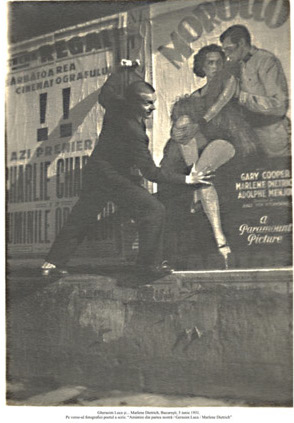
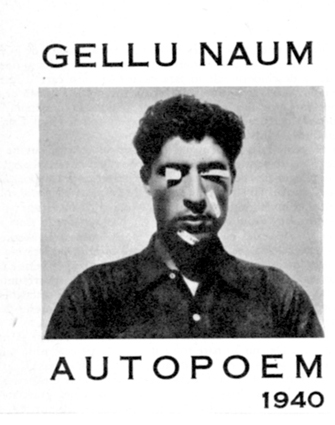
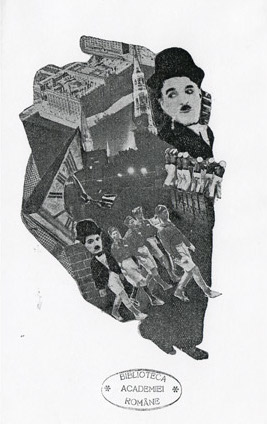
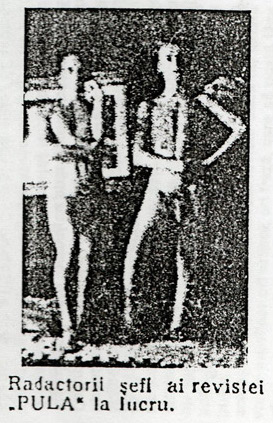
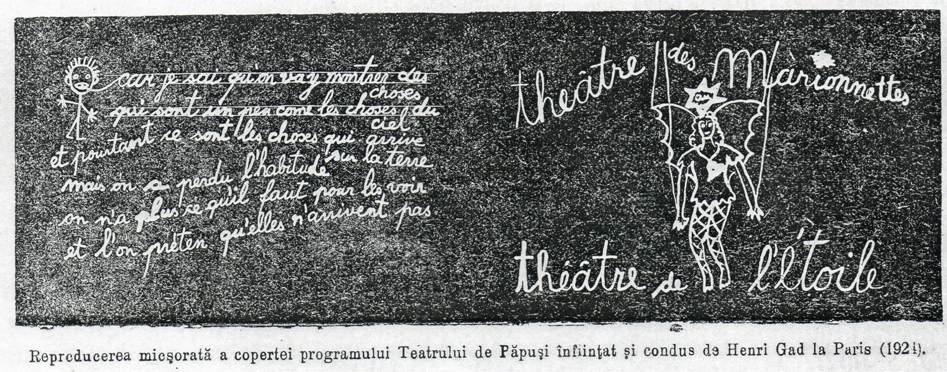
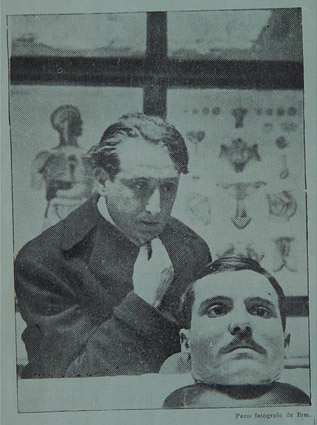
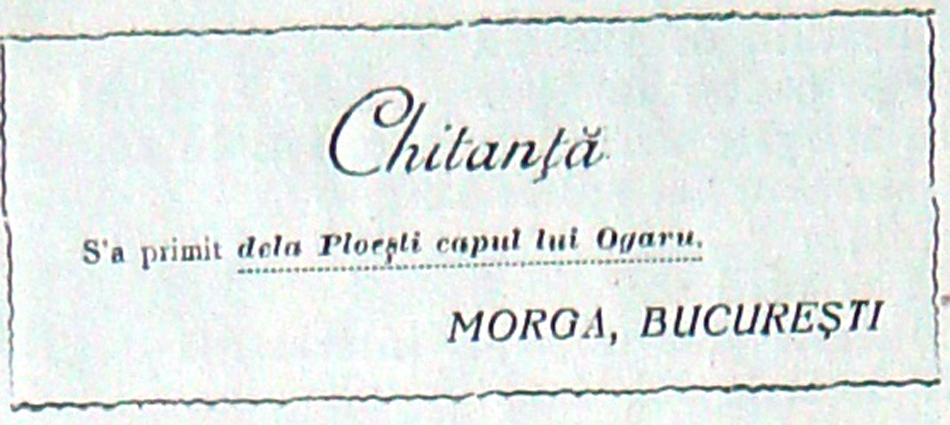

Comments are closed here.